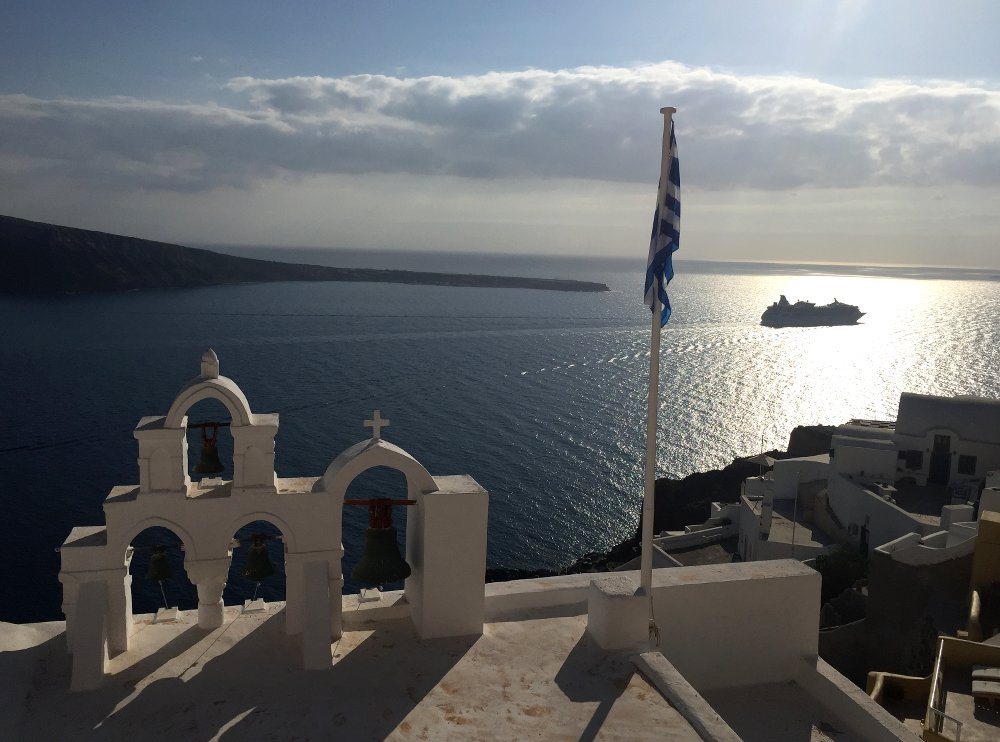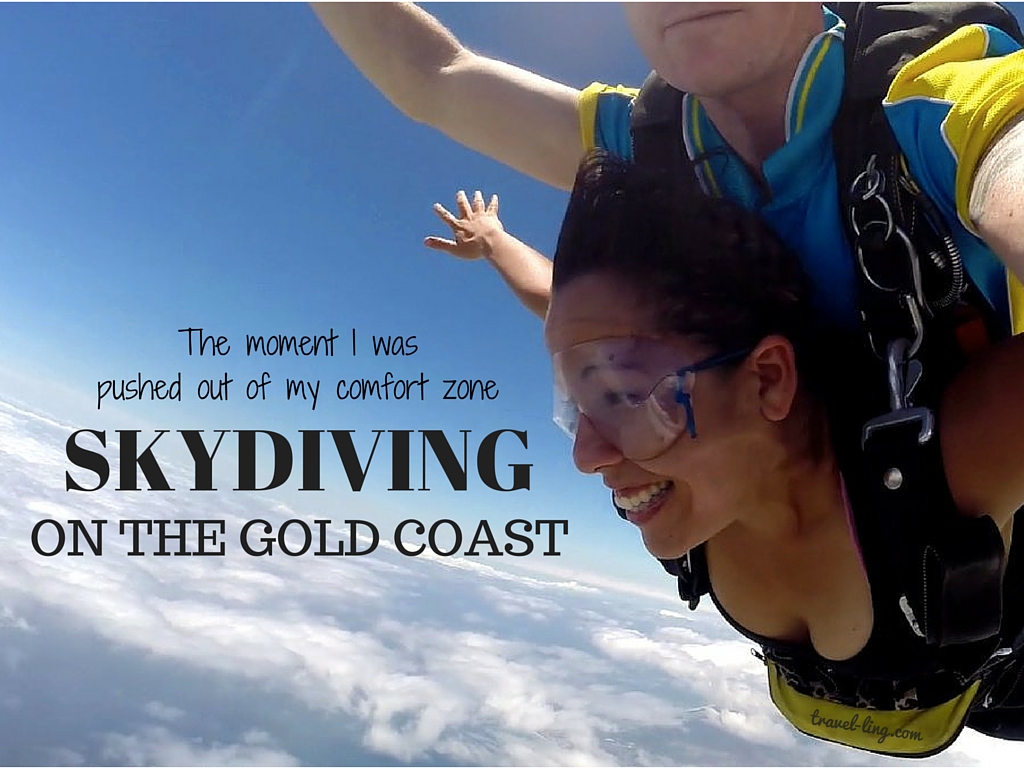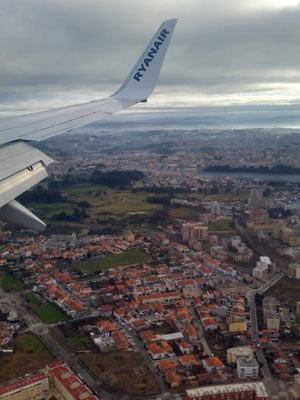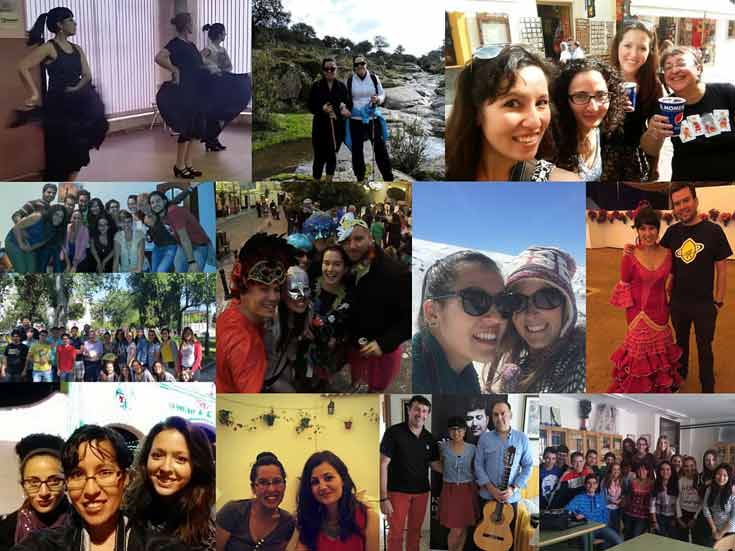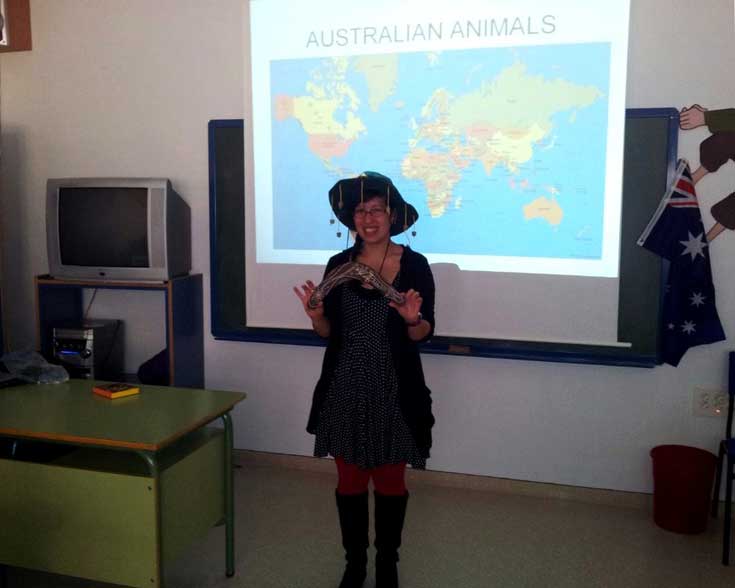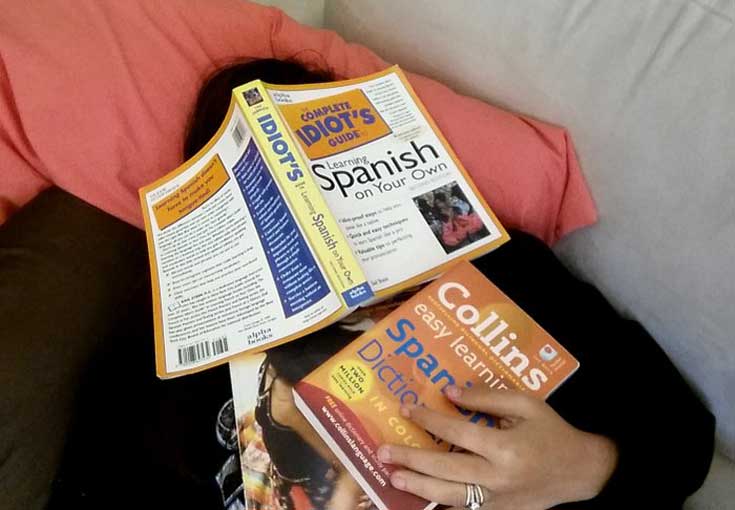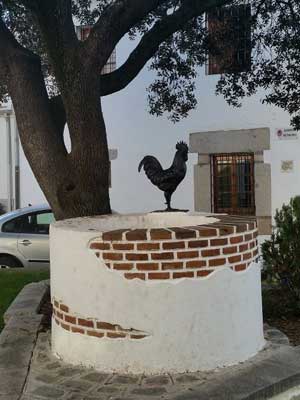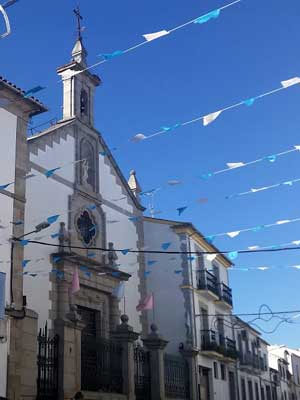
Getting the Perfect Photo in Santorini
Getting the Perfect Photo in Santorini
“They all come here because it’s so white and clean…”, a fellow traveller said to me as we watched a bridal party, with professional camera crew in tow, pose against the white-washed walls and blue-domed churches. It was the second bridal party we had seen that day, roaming around Oía looking glamorous with flowing gowns, perfect hair and stiletto heels. They certainly made me, with my denim shorts, messy beach hair and €10 espadrilles feel a little underdressed. I had never thought of Santorini in that way before (as a destination just for staged wedding photos), but when my new travel companion said it, it made complete sense. I mean, if you want the perfect wedding or formal photos, Santorini provides the perfect backdrop.
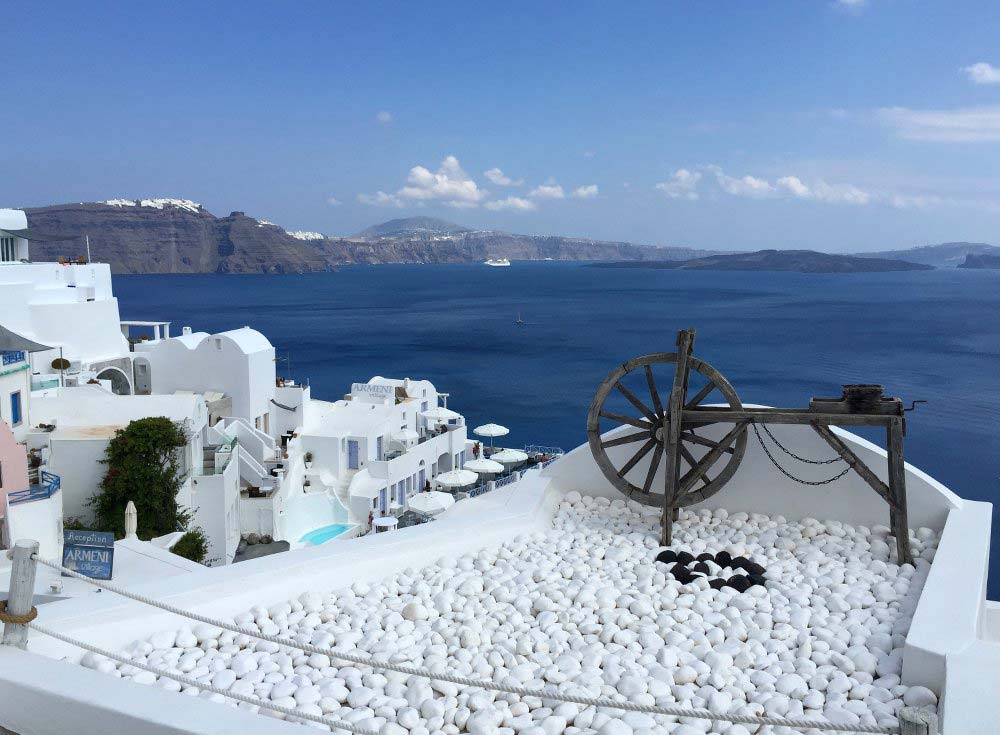
Anyone who trolls through travel photos on Instagram can see a stream of stunning images from Santorini. It would have to be the most photographic place in the Greek Islands. The white buildings provide the perfect contrast against the deep blue of the Caldera sea. As my new friend and I got talking, we agreed that there is a sense of cleanliness and luxury to Santorini that makes it stand out from the other Greek Islands.
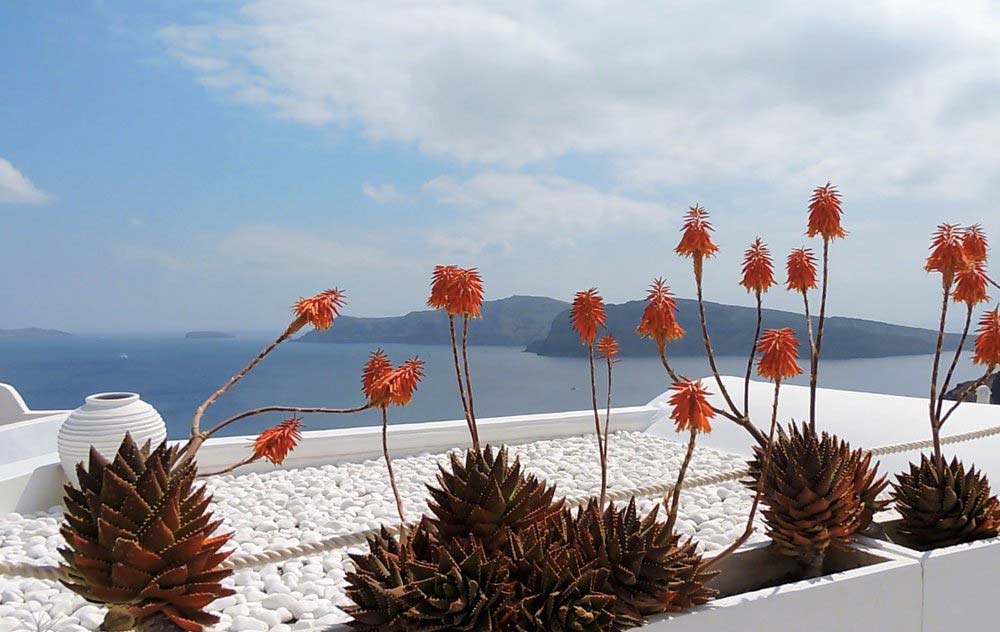
When we were deciding which Greek Island to visit, I was drawn to Santorini for those iconic blue-domed churches. I wanted to get my very own picture of said churches and the perfect sunset shot of the sun setting over the Caldera and against the colourful hillside of cave dwellings and resorts.

So without further adieu, here are our tips to get the perfect photo in Santorini…
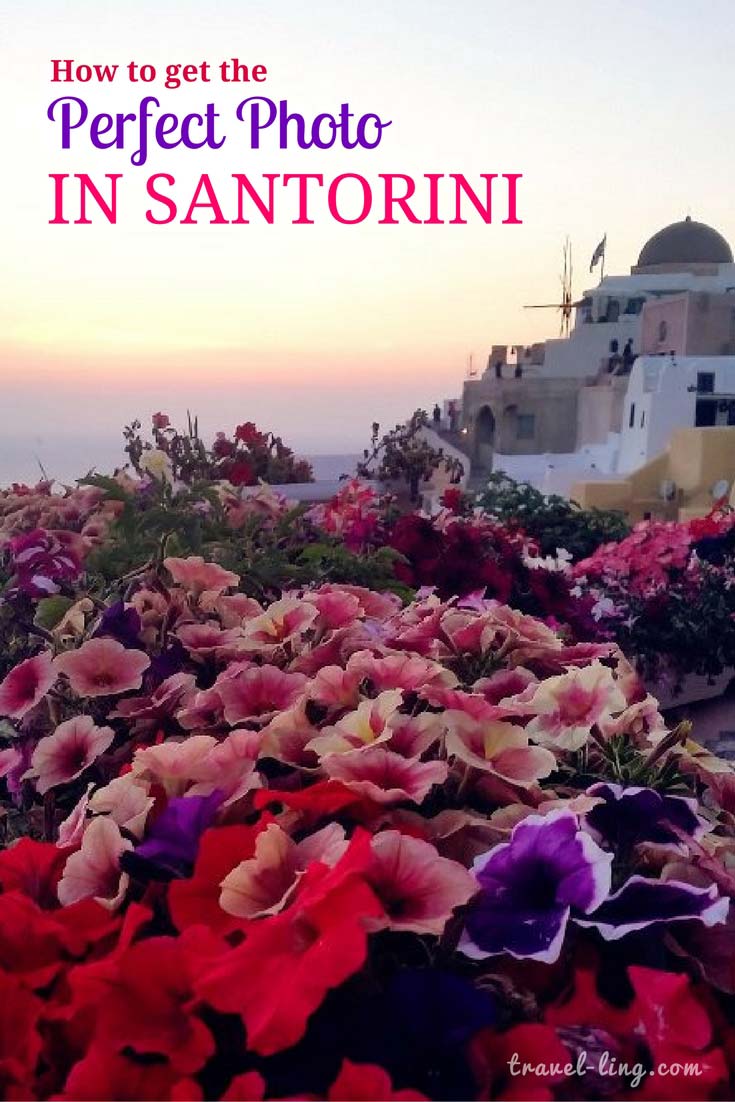

Map out your subjects/landmarks
Despite how small Santorini, specifically Oía, is, it’s quite easy to get lost in the small alleys and winding paths. And surprisingly, those iconic churches, although high in number, are quite hard to find if you don’t know where to look. The easiest way to find them, is to walk down Nik. Nomikou (the main street in Oía) and find Melenio Cafe. Around the corner from the cafe is a small alley that will lead you to the churches. The other spot we recommend going to is the Byzantine Castle ruins. This is where most people flock to for the sunset photos. Here’s a map to help:
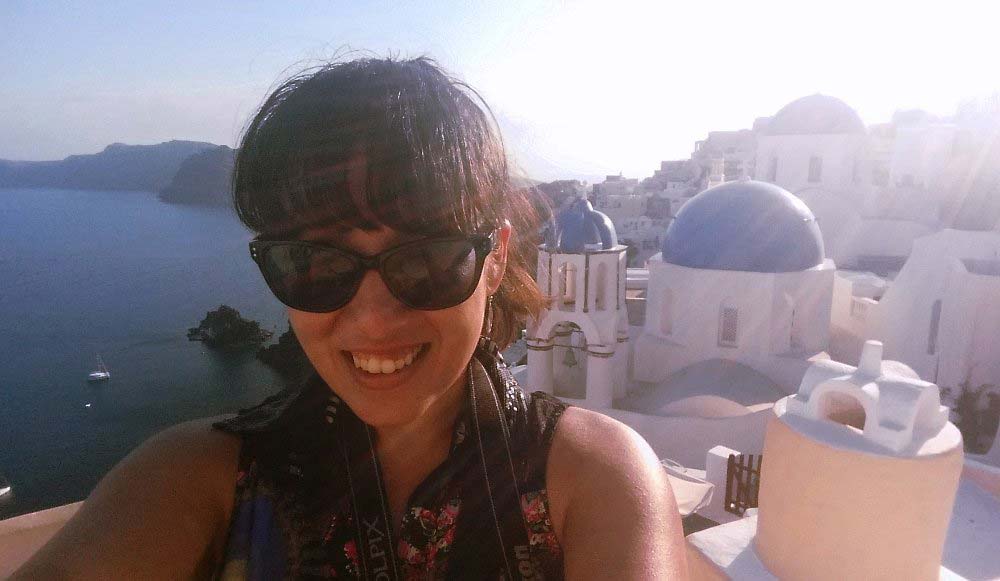
Pick your times
If you want your subject to be washed with the golden hues of a sunrise or sunset, you need to know what times they occur (and where the sun rises and sets). For example, the blue domed churches aren’t as spectacular at sunset, as the sun descends beyond around the curve of the peninsula. Early in the morning however, you will get the gorgeous, golden colours washing over the buildings (but we aren’t morning people and chose to sleep in instead of get up – priorities, right!?) A quick internet search will give you fairly accurate times of sunrise and sunset, so plan your photos around that.
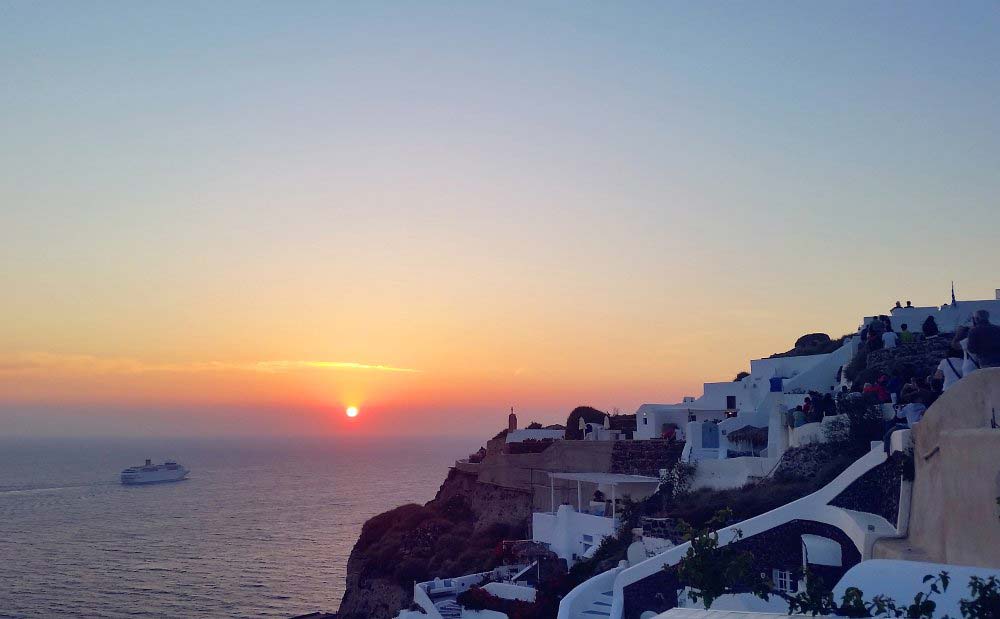
Stake out your spot… early!
On our first night, we made the mistake of underestimating how many other people also wanted that perfect sunset shot. We spent the afternoon wandering through the alleys and didn’t start looking for our spot until it was too late. The best spots were filled with huge crowds all with the same idea. That evening, we missed the perfect pic as we just couldn’t get past all of the people crowded in every corner of an alley with a view. The next evening, we got to the castle really early and claimed an ideal perch. If you want that coveted spot, be prepared to arrive a couple of hours prior to sunset, as the areas fill up quickly, especially in summer. Make sure you have fluids and stuff to eat while you hang out, as every other ‘photographer’ won’t hesitate to take your spot if you leave it unattended.

Have the right gear and settings on your camera ready
If you’ve got a DSLR or mirrorless camera, play with your settings in advance to work out what is right for you. As a general rule, keep the ISO low (around the 100 mark). Still being somewhat of an amateur, I still default to the P (Program) mode, which adapts the Shutter Speed and Aperture automatically. But if you are quite confident, and have a tripod, then switch to Aperture or Manual mode and play with around with the settings. To avoid a washed out look, try reducing exposure settings slightly and trial different white balances to change the tones of the photo. If you are a phoneographer, then work with what you have. If you want to be really professional (and avoid any blurry pics), have a tripod set up and ready for the event. The tip is to review the pics as you go and make the appropriate changes to the settings (as quickly as you can, so you don’t miss the main event!).
Enjoying this post and want to read more about Santorini? Check out our post, Santorini – The Place for Love
Watch your lines and the horizon
The perfectionist in me cannot handle photos that aren’t straight. Unless you are intentionally trying to be somewhat artistic and have the image skewed, try to take the photo straight. Use the gridlines on your device if that helps. A crooked horizon line often ruins so many potentially perfect photos. If you have taken a crooked photo, not all is lost, as editing programs can fix it (so you have NO excuse to post a crooked photo on Instagram!).
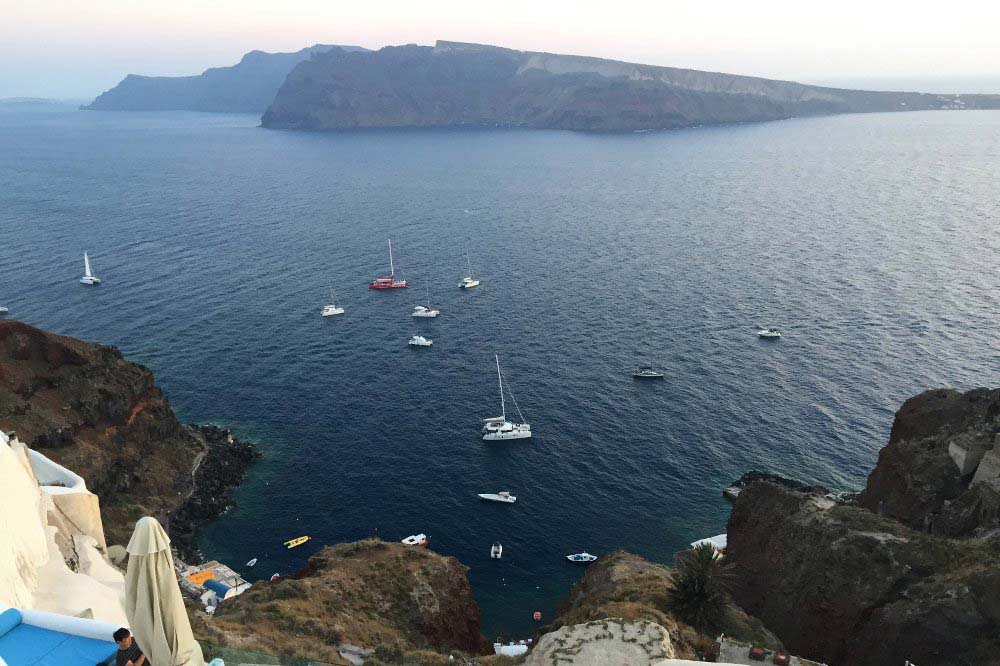
Frame your picture & experiment with angles
Often, the best pictures are those that are slightly different to the rest. Play around with angles and focal points. Try shooting from different angles – get to the ground and shoot up, or find a higher vantage point and shoot down (although beware of the slippery surfaces and angry nonnas in Santorini – one came out swinging a broom at a brave tourist who was trying to take a photo from the roof of one of her neighbour’s houses. She then proceeded to yell at us demanding money for taking photos of her views!).
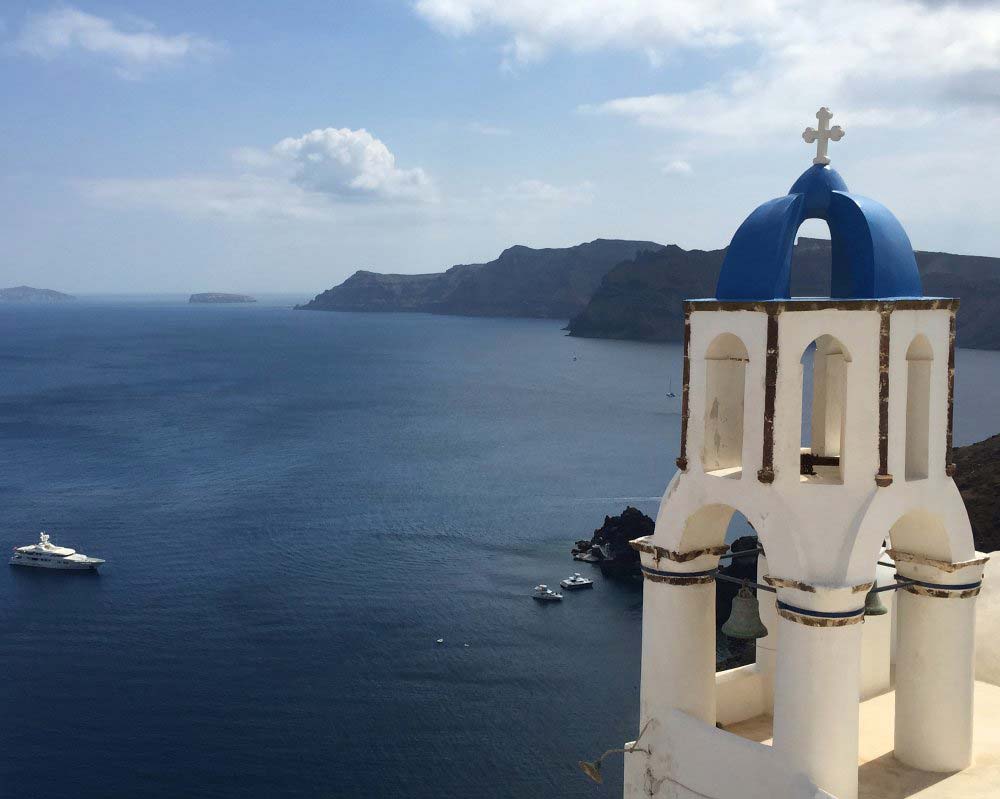
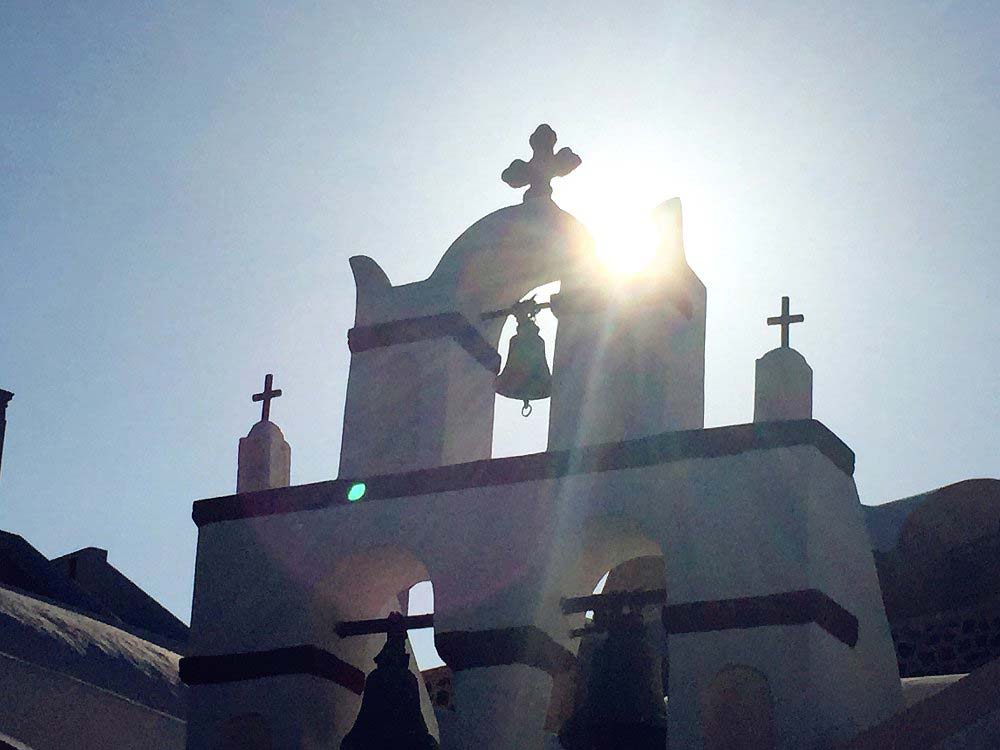
Make friends with other travellers and/or photographers
Whether you are waiting for the sun to set, or politely waiting your turn to take a picture of the churches, you may as well make friends while you are there. Get chatting to others around you and offer to take photos of each other. A good full-frame photo trumps a selfie any day. Just make sure you are clear on what you are after and check your pics before you move on, so you hopefully have one you are happy with. There’s also safety in numbers from the before-mentioned crazy, cranky nonnas.
Inspired by these photos? Check out our photo essay of another gorgeous Greek Island, Paros.
Find the ‘quirky’
The perfect photo doesn’t always capture the essence of a place. Sure, get the iconic shot that you can proudly display to family and friends, but keep your eyes peeled for other potential pictures to shoot. Whether it’s some colourful flowers, or freshly-caught octopus hanging out to dry, take the time to explore your surroundings and appreciate all the details around you.
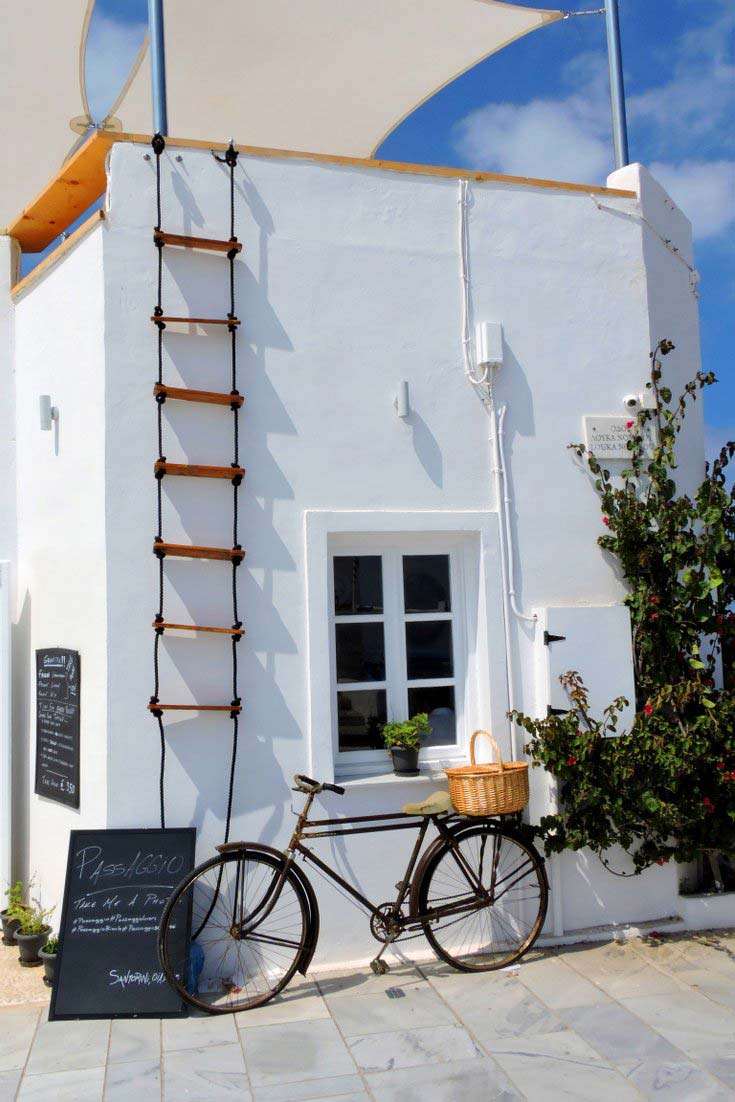
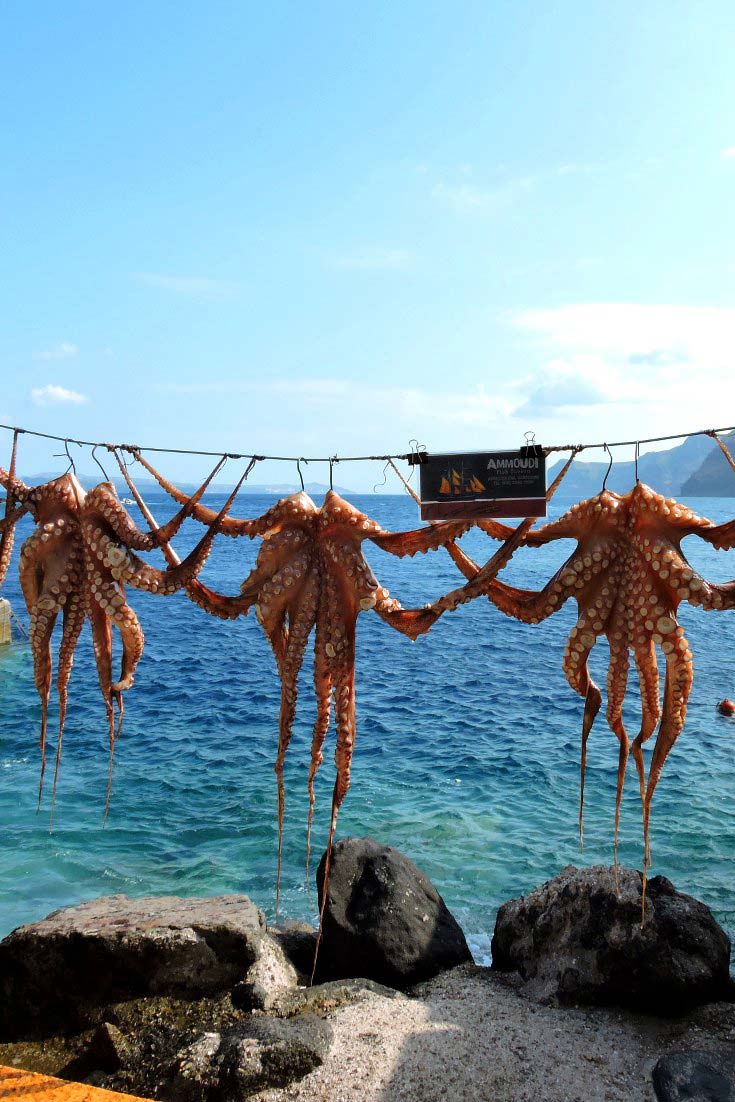
Despite following all of this advice, you may luck out and get less than ideal conditions. Sadly for us, the sunset we had staked out had a lot of cloud cover, so we didn’t get that bright, fiery sky of oranges, pinks and purples that I was hoping for. Nevertheless, part of the process is not just to capture the perfect photo, but collect the memories along the way. We got to meet other travellers, get lost through the streets of Oía and fall in love with this picturesque island, something that sometimes even the most perfect photo can’t create.
